Why Multilingual Website Design is a Necessity Today?
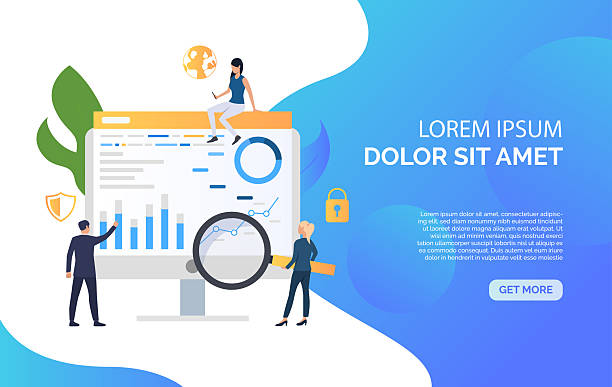
In today’s world, where geographical borders have faded thanks to the internet, #access to information and #global communication have become more important than ever.
Businesses, to expand their reach and attract more audiences, are forced to resort to innovative solutions.
One of these key solutions is multilingual website design.
This approach allows you to present your products and services in the language your international audience prefers.
Regardless of where your target market is located in the world, having a website that can display its content in various languages is a tremendous competitive advantage.
This not only increases user trust and satisfaction but also enhances your brand’s credibility globally.
Without multilingual website design, many business opportunities in emerging markets or even older markets with different native languages are lost.
In fact, ignoring the language needs of the audience means losing a large share of the potential market.
Today, single-language websites create many limitations for the growth and development of businesses, as the world is rapidly becoming a global village where multicultural communication is paramount.
Investing in multilingual website design means investing in the future of your business and opening doors to new and thriving markets.
This is an essential step for any brand looking to grow and become a global player.
Therefore, understanding the necessity of multilingual website design is crucial for every business.
This action not only leads to increased traffic and customers but also introduces your brand as a global and accessible entity.
Are you worried your old company website will drive away new customers? Rasaweb solves this problem with modern and efficient corporate website design.
✅ Increases your brand’s credibility.
✅ Helps attract targeted customers.
⚡ Contact Rasaweb for a free consultation!
Fundamental Principles in Multilingual Website Design and Optimization

Multilingual website design goes beyond mere text translation and requires adherence to specific principles for success.
The first and most important principle is considering an appropriate URL structure.
Using subfolders (e.g., yoursite.com/en/), subdomains (e.g., en.yoursite.com), or top-level domains (e.g., yoursite.com) for each language are common choices, each with its own advantages and disadvantages.
Choosing the correct structure directly impacts SEO and user experience.
The second principle is the use of hreflang tags.
These tags help search engines display the correct language version of the website to users based on their geographical region or language settings, which is crucial for multilingual SEO.
Incorrect use of these tags can lead to duplicate content issues.
Third, content localization; this means adapting the content to the culture, idioms, and even currency and date formatting system of the target region, not just word-for-word translation.
Localized content will be much more engaging and relevant to the audience.
Fourth, optimization for search engines (SEO) in each language.
This includes keyword research for each language, optimizing meta tags, and building relevant inbound links in each language version.
Each language needs its own specific SEO strategy.
Fifth, choosing a Content Management System (CMS) that fully supports multilingual capabilities, such as WordPress with plugins like WPML or other dedicated platforms.
Finally, User Experience (UX) should not be forgotten.
The user interface design should allow users to easily select their desired language and have a consistent navigation experience in every language.
These principles are essential for successful multilingual website design and ensure that your website is not only seen but also effectively attracts and retains users.
Challenges and Solutions for Implementing Multilingual Website Design

Multilingual website design, despite its numerous advantages, comes with its own specific challenges, neglecting which can lead to project failure.
One of the biggest challenges is translation quality.
Machine translation often lacks cultural nuances and local idioms and can lead to misunderstandings.
The solution to this challenge is to use professional native translators or translation agencies who are proficient in both the language and your business’s specialized field.
Another challenge is managing and updating content in multiple languages.
As the number of languages increases, content management becomes more complex.
Using powerful CMSs with built-in multilingual capabilities or specialized plugins can facilitate this process.
Table 1: Common Challenges and Solutions for Multilingual Website Design
| Challenge | Solution |
|---|---|
| Low translation quality | Use professional native translators and cultural localization |
| Complex content management | Use CMS with strong multilingual capabilities (e.g., WPML) |
| Multilingual SEO issues (hreflang) | Accurate implementation of hreflang tags and correct URL structure |
| Continuous maintenance and updates | Establish regular processes for content updates in all languages |
Security challenges as well as technical support are also among the issues that need attention.
A multilingual website has a higher level of complexity and, therefore, requires a stronger technical team for maintenance and troubleshooting.
Ensuring that your infrastructure and server can support additional traffic and data volume is crucial.
The conversion rate challenge must also be considered.
Simply translating a website does not guarantee an increase in conversion rates.
The design of Call-to-Action (CTAs) elements and forms should be consistent with the culture and expectations of local users.
Finally, the budget and time challenge is also present.
Multilingual website design, especially if done with high quality, requires significant budget and time.
Accurate planning and proper resource allocation are essential to overcome these challenges.
By understanding and planning for these challenges, multilingual website design projects can be successfully completed.
Choosing the Best CMS for Multilingual Websites

Choosing the right Content Management System (CMS) is one of the key decisions for the success of a multilingual website design project.
A CMS should not only have the necessary capabilities to manage multiple languages but also facilitate Search Engine Optimization (SEO) in each language and provide a smooth user experience.
WordPress, Joomla, Drupal, and even e-commerce platforms like Shopify and Magento all have multilingual support capabilities, but their approaches differ.
WordPress: Although WordPress is not inherently multilingual, by using powerful plugins like WPML (WordPress Multilingual Plugin) or Polylang, it becomes one of the best options for multilingual website design.
WPML provides the ability to translate posts, pages, categories, tags, menus, and even widgets, and it fully supports hreflang tags.
Its ease of use and large user community have made WordPress a popular choice.
Joomla: Joomla inherently has stronger multilingual capabilities than WordPress.
These capabilities are built into the core of the CMS, eliminating the need for heavy plugin installations.
Managing languages, translating content, and setting up configurations for each language are much easier in Joomla, making it suitable for websites with more complex structures.
Drupal: Due to its high flexibility and strong enterprise capabilities, Drupal is a highly suitable option for large-scale multilingual website design projects.
Drupal’s core provides full multilingual support, allowing you to translate every aspect of your website into any language you need.
This platform is more suitable for experienced developers and offers significant power in customization.
E-commerce Platforms: For online stores, Shopify and Magento also offer multilingual solutions.
Shopify provides this capability through apps and plugins, while Magento inherently has stronger support for multi-store and multilingual functionality.
The final CMS selection should be based on specific project needs, budget, and the capabilities of the development team.
A suitable CMS streamlines the multilingual website design process and makes future management easier.
Don’t have a corporate website yet and missing out on online opportunities? With professional corporate website design by Rasaweb,
✅ Double your business’s credibility
✅ Attract new customers
⚡ Free consultation for your corporate website!
The Importance of Multilingual SEO in Website Design
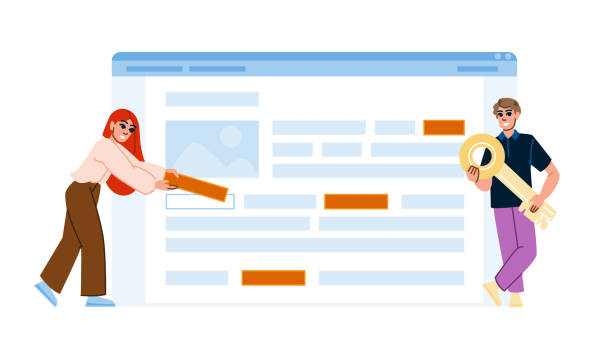
Just as multilingual website design is crucial for expanding global reach, multilingual SEO is essential to ensure your website’s visibility in international search results.
Multilingual SEO goes beyond mere keyword translation and involves complex strategies that ensure search engines correctly index different language versions of your website and present them to target users.
The first step in multilingual SEO is keyword research in each language.
Keywords that are effective in one language may not have the same meaning or search volume in another.
It is necessary to use keyword research tools specific to each language to identify phrases that local audiences are searching for.
Correct use of hreflang tags is one of the most important aspects of multilingual SEO.
These tags tell search engines that different pages of your website are different versions of the same content for different languages or geographical regions.
Incorrect hreflang implementation can lead to SEO penalties and reduced rankings.
Furthermore, URL structure is also very important for multilingual SEO.
The choice between subfolders (e.g., example.com/fr/), subdomains (fr.example.com), or top-level domains (example.fr) must be made carefully, as each has a different impact on how your website is understood by search engines and its relevance to local users.
Localized content creation is also crucial for multilingual SEO.
Content should not only be translated but also adapted to the culture and expectations of the local audience.
This includes adapting idioms, figures, units of measurement, and even the writing tone.
Finally, Link Building must also be done multilingually.
Acquiring backlinks from reputable and relevant websites in each language and region shows search engines that your website is also authoritative in that language.
Overall, multilingual SEO is an ongoing process that is essential for maintaining and improving your website’s ranking in global markets.
Ignoring it significantly diminishes the benefits of multilingual website design.
Questionable Content and Cultural Localization in Website Design

In the discussion of multilingual website design, perhaps the most frequently overlooked aspect is the cultural localization of content.
“Questionable content” here means: Is mere translation enough to attract and connect with local audiences? The answer is often no.
A text might be grammatically correctly translated, but culturally completely inappropriate or even offensive.
Cultural localization means fully adapting content, images, colors, symbols, and even calls to action to the norms, values, and cultural expectations of the target market.
For example, in some cultures, the use of certain images might be taboo, or specific colors might have different meanings.
A joke or colloquialism that is very common in one language might have no meaning or even be misinterpreted in another.
Even the website navigation style and visual layout must be consistent with local user habits.
Did you know that some cultures read from right to left, and this should be reflected in UI/UX design?
Cultural localization includes items such as:
- Selecting appropriate fonts and typography for each language (some fonts have better readability or convey a different feeling in specific languages).
- Adapting images and graphics to the local culture (e.g., using models with a local appearance).
- Adjusting date, time, currency, and measurement system formats.
- Reviewing the tone and writing style to match local expectations.
- Paying attention to religious, political, or social sensitivities.
Ignoring cultural localization can lead to loss of audience trust, reduced conversion rates, and ultimately the failure of investment in multilingual website design.
Therefore, whenever you intend to offer your website in another language, ask yourself: Does this content convey the same message in the target culture as it does in the original language? Could any aspect of it create misunderstanding? Answering these questions will guide you towards a comprehensive and successful localization approach in multilingual website design.
This depth of content makes your website not only understandable but also relatable and appealing to global audiences.
Modern Tools and Trends in Multilingual Website Design
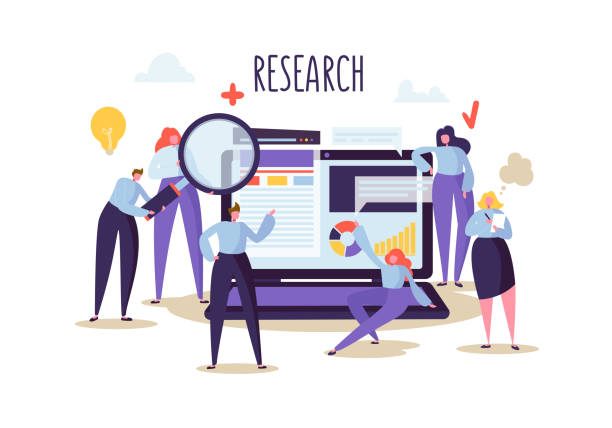
The world of multilingual website design is constantly evolving, with new tools and trends emerging to simplify and make the process more efficient.
One of the most significant advancements is the use of Artificial Intelligence (AI) and Machine Learning (ML) in translation.
While traditional machine translation often had shortcomings, AI-powered tools like DeepL and Google Translate have made significant progress and can provide much more accurate translations, although they still require human review.
These tools can serve as a quick starting point for multilingual website design and reduce time and cost.
Table 2: Modern Tools and Trends in Multilingual Website Design
| Trend/Tool | Description | Application in Multilingual |
|---|---|---|
| AI/ML-based translation | Provides more accurate and faster translations | Accelerates initial content translation, reduces costs |
| Headless CMS Platforms | Separates content section from the presentation layer | Greater flexibility in delivering content in different languages across various platforms |
| Personalized User Experience | Provides relevant content based on user behavior | Displays targeted content based on user’s language and geographical location |
| Localization Process Automation | Integrates translation tools with CMS | Automates content updates in all languages |
Another important trend is the use of Headless CMS platforms.
This approach allows developers to manage content in a CMS and then deliver it via API to any platform (website, mobile application, kiosk, etc.) and in any language they need.
This flexibility is particularly beneficial for large multilingual website design projects that publish content across various channels.
Automation of the localization process is also growing.
This includes tools that automatically identify new content for translation, send it to translation systems, and upload it to different language versions of the website after translation.
This automation significantly reduces the time and effort required to maintain a multilingual site.
Finally, the focus on personalized user experience in multilingual website design is also increasing.
This involves using data to provide more relevant and customized content to users based on their language, geographical location, and even previous behavior.
These tools and trends pave the way for more efficient, powerful, and user-friendly multilingual website design.
User Experience (UX) in Multilingual Websites
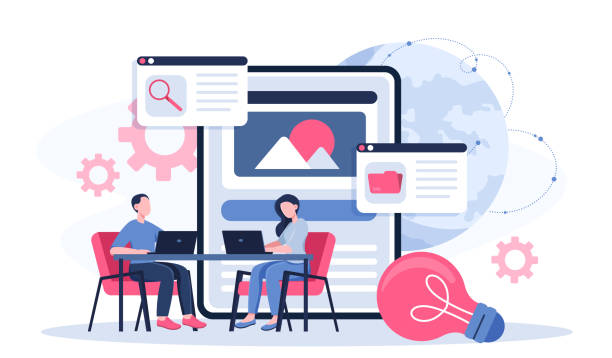
Multilingual website design not only means the technical ability to switch languages, but it must also provide a seamless and optimized User Experience (UX) for all users, regardless of their language.
A poor user experience can render even the best translated content ineffective.
The first point in multilingual UX is the ability for easy and clear language selection.
Country flags are not always the best option, as one language may be spoken in multiple countries, and one country may have multiple official languages.
The best approach is to use the language name as text (e.g., “English“, “فارسی“, “Deutsch“) and place the language selection button or menu in an accessible and prominent location (usually the header or footer).
The second point is maintaining consistency in design and navigation.
Despite language changes, the overall website structure, menu placement, and core design elements should remain consistent.
This helps users feel familiar and easily find their way in whatever language they choose.
Any sudden changes in layout can cause confusion.
The third aspect is adaptation to writing direction (RTL/LTR).
Languages like Persian and Arabic are written from right-to-left (RTL), while many other languages are left-to-right (LTR).
A successful multilingual website design should be able to dynamically change the layout direction of elements based on the selected language to maintain readability and aesthetics.
Page load speed is also crucial for user experience.
Ensure that your server can quickly respond to user requests from different parts of the world.
Using Content Delivery Networks (CDNs) can help improve load speed.
Finally, consider user feedback.
After implementing a multilingual site, collect feedback from native users in each language to identify and resolve any potential issues in translation, design, or navigation.
A good user experience not only retains visitors but also converts them into loyal customers, and this is key to success in global markets.
Are you dissatisfied with the low conversion rate of visitors to customers on your e-commerce site?
Solve this problem forever with professional e-commerce website design by Rasaweb!
✅ Increase visitor-to-customer conversion rate
✅ Create an excellent user experience and build customer trust
⚡ Get a free consultation
Success Stories and Lessons Learned in Multilingual Website Design
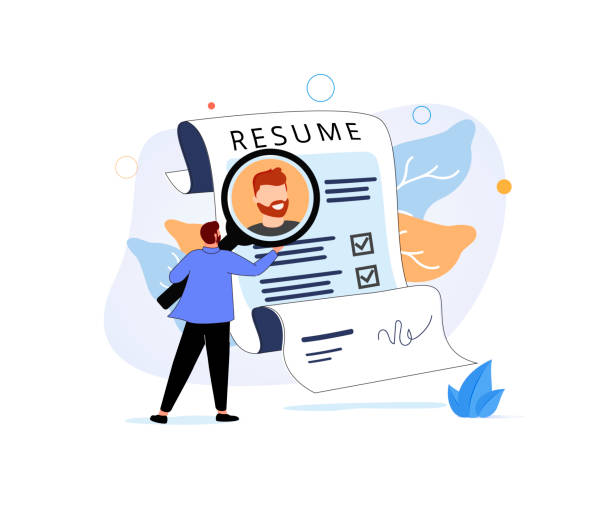
Reviewing success stories in multilingual website design can be inspiring and offer valuable lessons for businesses aiming to enter global markets.
One prominent example is Airbnb.
This platform focused on localized user experience from the outset.
Not only is their website available in dozens of languages, but its content is also localized to align with the culture and expectations of each region.
This includes adapting images, descriptions, and even payment options.
The lesson learned is that deep localization, beyond mere translation, leads to broader acceptance and faster growth in various markets.
Another example is IKEA.
Although they sell similar products worldwide, their websites are heavily localized for each country and language.
This includes changes in product catalogs based on local climate and lifestyle, regional pricing, and even furniture suggestions based on the size of common homes in that area.
This approach has helped IKEA establish stronger connections with its customers in each market.
The key lesson from IKEA is that even if your product is global, its presentation should be local.
Conversely, there are also examples of failures that provide important lessons.
Some companies have merely translated their content with machine translation tools, without paying attention to cultural nuances or multilingual SEO.
The result has been that their website not only failed to rank in search engines but also its content was incomprehensible or even meaningless to local users.
These cases emphasize that insufficient investment in translation quality and localization can render the entire multilingual website design project ineffective and even harm brand credibility.
The overall lesson from all these stories is that multilingual website design is a long-term investment that requires meticulous planning, attention to cultural and technical details, and a commitment to quality.
Success in this field is measured not only by access to new markets but also by the ability to effectively and deeply communicate with audiences worldwide.
The Future of Multilingual Website Design and the Role of AI

The future of multilingual website design is deeply intertwined with advancements in Artificial Intelligence (AI) and Machine Learning (ML).
AI has the potential to revolutionize the process of translating, localizing, and optimizing websites, making them more efficient, accurate, and personalized than ever before.
One of the main areas of AI’s impact is translation.
With continuous improvements in large language models (LLMs) like GPT and the development of Neural Machine Translation (NMT), the quality of machine translations has significantly increased.
This means that in the near future, we can expect highly accurate initial translations to be performed by AI, requiring only minor editing and review by human translators.
This will greatly increase the speed of multilingual website design and content updates.
In addition to translation, AI will play an increasing role in content localization.
AI algorithms can analyze user behavioral data and identify cultural patterns, regional interests, and linguistic preferences.
This allows websites to dynamically personalize content, images, and even layout based on the local user’s profile.
This level of personalization significantly improves the user experience and increases conversion rates.
Furthermore, AI can play a vital role in multilingual SEO.
AI-powered tools will be able to research keywords in different languages with greater accuracy, optimize URL structures, and even provide intelligent suggestions for improving hreflang tags and link building.
Automation is another key aspect.
AI can automate tedious processes such as identifying new content for translation, sending it to translation systems, and publishing it in various language versions.
This allows multilingual website design teams to focus on more strategic aspects.
However, it is important to remember that AI will not completely replace human creativity and cultural understanding, but rather act as a powerful tool that helps enhance human capabilities in multilingual website design.
The future promises websites that not only speak multiple languages but also connect with each user on a deeper level.
Frequently Asked Questions
| Question | Answer |
|---|---|
| What is multilingual website design? | The process of creating a website whose content is available to users in more than one language. |
| Why should I make my website multilingual? | To reach a wider global audience, improve user experience for non-native speakers, and increase sales or engagement. |
| What are the methods for implementing a multilingual site? | Using subdomains, subdirectories, or URL parameters, or using different Top-Level Domains (TLDs) for each language. |
| Which method is better for SEO? | Generally, using subdirectories (like example.com/fa/) is recommended for SEO, as they share the main domain’s authority. |
| What is the hreflang tag and what is its use? | The hreflang tag is an HTML attribute that helps search engines understand which version of a page is suitable for a specific language or region. |
| Is machine translation sufficient for multilingual website content? | Usually not. For a good user experience and to maintain credibility, professional translation and content localization are essential. |
| What does Localization mean? | The process of adapting the content, design, and functionality of a site to the culture, language, currency, and other specific characteristics of a target region or country. |
| What is the importance of language selection in multilingual website design? | Users should be allowed to easily choose their desired language, usually through a clear button or menu in the site’s header. |
| What challenges exist in multilingual website design? | Managing content in different languages, maintaining consistency in design and user experience, multilingual SEO, and translation and maintenance costs. |
| What features should a suitable Content Management System (CMS) for a multilingual site have? | It should allow easy content management in different languages, support multilingual URL structures, and have relevant plugins for translation and localization. |
And other services of Rasaweb Advertising Agency in the field of advertising
Smart Custom Software: A new service for improving SEO ranking through SEO-driven content strategy.
Smart Digital Advertising: An effective tool for campaign management with the help of key page optimization.
Smart Content Strategy: Revolutionize click-through rates with Google Ads management.
Smart Link Building: An innovative platform for improving digital branding with Google Ads management.
Smart Direct Marketing: A specialized service for SEO ranking growth based on attractive UI design.
And over hundreds of other services in the field of internet advertising, advertising consulting, and organizational solutions
Internet Advertising | Advertising Strategy | Advertorials
References
The Importance of Multilingual Website Design in Business Development
How to Create a Multilingual Website? Comprehensive Guide
International Marketing Strategies with a Multilingual Website
Search Engine Optimization (SEO) for Multilingual Websites
? To elevate your business in the digital world and reach the peaks of success, Rasaweb Afarin Digital Marketing Agency is by your side with innovative services including website design with a modern user interface, SEO, and advertising campaign management, ensuring a powerful and lasting online presence.
📍 Tehran, Mirdamad Street, next to Bank Markazi, Kazeroon Jonubi Alley, Ramin Alley, No. 6




